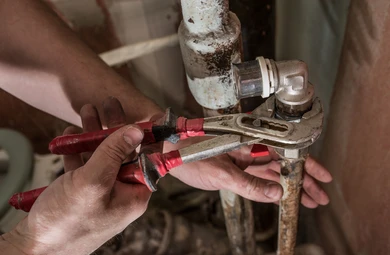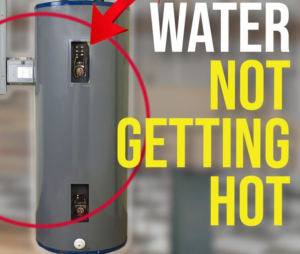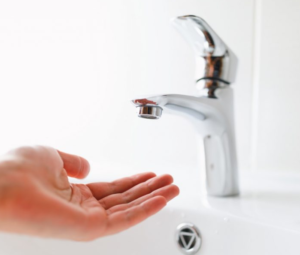If you’ve been living in your home for a while, you’ve likely encountered the occasional plumbing issue—whether it’s a small leak under the sink or the need to tighten a faucet. But as your home ages, so does its plumbing, and those minor fixes might point to a larger issue lurking in your walls and under your floors. Knowing when to replace your old plumbing pipes can prevent costly repairs, water damage, and even health hazards. Here’s how to determine when it’s time to upgrade your home’s plumbing.
1. The Age of Your Pipes
One of the first things to consider is the age of your home’s plumbing system. Just like anything else, pipes have a limited lifespan. If you live in an older home, particularly one built before the 1970s, there’s a good chance that your pipes are made of materials like galvanized steel or iron, which corrode over time. These older pipes are prone to leaks, blockages, and even bursts, causing extensive damage.
If your home is more than 50 years old and still has its original plumbing, it’s worth having a professional inspection to determine whether it’s time to replace the pipes. For homes with galvanized steel pipes, replacement should be seriously considered after 40 to 50 years, as these pipes are notorious for rusting on the inside, leading to low water pressure and discolored water.
2. Frequent Leaks and Pipe Damage
A leak here and there might not seem like a big deal, but if you’re frequently dealing with leaky pipes, this could be a sign that your plumbing system is on its last legs. When pipes become corroded, the metal weakens and is more likely to develop small cracks or holes, leading to leaks. If you’ve had to repair several leaks within a short period, it may be more cost-effective to replace the entire system rather than continually patching up the existing pipes.
Frequent leaks can also indicate structural damage to the pipes. Materials like copper, which is more commonly used in modern plumbing, can also experience wear and tear over time, especially in areas with hard water. Hard water contains high levels of minerals like calcium and magnesium, which can cause mineral buildup in your pipes, further weakening them.
3. Visible Corrosion or Rust
If you notice any rust or corrosion on exposed pipes, it’s a sign that your plumbing may need replacing. Corrosion can eat away at the metal, leading to leaks and even pipe bursts. Rust is especially concerning because it can contaminate your drinking water, making it unsafe for consumption.
Look out for signs of rust on fixtures as well, such as faucets and showerheads, as this can indicate corrosion inside the pipes. Water that appears reddish-brown when you first turn on the tap is another strong indication of rust within the plumbing system.
4. Discolored or Contaminated Water
Water that appears cloudy, discolored, or has an unusual smell or taste can indicate serious problems with your plumbing. If your water is brown, yellow, or reddish, this is usually a sign that rust is present in your pipes. While drinking rust-tainted water isn’t typically harmful in small amounts, it’s still not something you want flowing through your taps long term.
Other contaminants like lead can leach into your water supply if your home has old lead pipes, which were commonly used in homes built before the 1940s. Lead pipes pose significant health risks, especially to children and pregnant women, as lead exposure can lead to developmental issues and other health problems. If you suspect your pipes may contain lead, it’s crucial to have them replaced as soon as possible.
5. Decreased Water Pressure
Another common sign that it’s time to replace your old plumbing pipes is a noticeable decrease in water pressure. Over time, pipes can develop blockages due to mineral buildup, corrosion, or internal damage. When this happens, water flow is restricted, leading to reduced pressure throughout your home. If you’re experiencing a significant drop in water pressure, particularly in multiple faucets or showers, it could be a sign that your pipes are narrowing and need to be replaced.
In some cases, decreased water pressure may be caused by a leak or a blockage in a specific section of piping, which can be repaired. However, if the problem is widespread throughout the home, it’s likely a systemic issue that requires a full pipe replacement.
6. Water Damage or Stains on Walls and Ceilings
One of the most telltale signs of old, failing plumbing is the appearance of water damage on your walls, ceilings, or floors. If you notice damp spots, peeling paint, or brown water stains, it could indicate a hidden leak in your pipes. These leaks can be caused by corroded pipes or joints that have deteriorated over time.
In addition to damaging your home’s structure, hidden leaks can lead to mold growth, which poses serious health risks, particularly for people with respiratory conditions or allergies. Replacing old pipes before they leak or burst can help you avoid these issues and protect both your home and your health.
7. Noisy Plumbing
If your plumbing makes strange noises—like banging, clanging, or rattling—it could be a sign that something is wrong with your pipes. Noisy plumbing is often caused by water hammer, a phenomenon that occurs when water flow is suddenly stopped, causing the pipes to vibrate. While water hammer can sometimes be addressed with simple fixes, such as installing air chambers or water hammer arrestors, it can also indicate loose pipes or worn-out plumbing components that need replacing.
Another noise-related issue is the sound of gurgling drains, which can indicate a blockage or improper ventilation in your plumbing system. While gurgling may not always necessitate a full pipe replacement, it’s worth investigating, especially in older homes where blockages can become more frequent as the plumbing system ages.
8. Material of the Pipes
The material of your pipes can also be a major factor in determining when they need to be replaced. As mentioned earlier, galvanized steel pipes are prone to rust and corrosion, but other materials have their limitations. For instance, polybutylene pipes, which were widely used in homes from the 1970s to the 1990s, are highly susceptible to breakage and should be replaced as soon as possible.
Copper pipes are generally more durable, but they can still corrode over time, especially in areas with highly acidic water. If your home has copper plumbing that’s over 50 years old, it may be time to consider replacing it with modern materials like PEX or PVC, which are resistant to corrosion and offer a longer lifespan.
Conclusion
While occasional plumbing repairs are a part of homeownership, knowing when to replace your old plumbing pipes can save you from the inconvenience and expense of frequent leaks, water damage, and even health hazards. If your home is showing any of the signs mentioned above, it may be time to consider upgrading your plumbing system.
For homeowners in Plano, TX, who are uncertain about the state of their plumbing, consulting a professional like Chrome Heating Air Conditioning can help you determine the best course of action. Regular inspections, prompt repairs, and timely pipe replacement are essential for maintaining a safe and functional plumbing system. Don’t wait until a small issue becomes a costly disaster—take proactive steps to ensure the longevity and safety of your home’s plumbing today.
FAQ
. How can I tell if my plumbing pipes need to be replaced?
Common signs include frequent leaks, discolored water, low water pressure, corrosion, and strange noises coming from the pipes.
2. What is the average lifespan of different types of plumbing pipes?
- Copper pipes: 50-70 years
- Galvanized steel pipes: 20-50 years
- PEX pipes: 40-50 years
- PVC pipes: 25-40 years
- Cast iron pipes: 75-100 years
3. What are the most common reasons for replacing plumbing pipes?
Pipes are usually replaced due to corrosion, frequent leaks, water discoloration, poor water pressure, and outdated materials like lead or galvanized steel.
4. Should I replace all of my pipes at once or only the damaged ones?
It’s recommended to replace all of your pipes if they are old or made from materials that are prone to corrosion and damage. Replacing only damaged sections may be more costly in the long run.
5. Can I inspect my plumbing pipes myself, or do I need a professional?
While you can look for visible signs of damage, a professional plumber can conduct a thorough inspection using specialized tools and knowledge to assess the condition of your pipes.
6. How much does it cost to replace plumbing pipes?
The cost depends on factors like the size of your home, the type of pipes used, and labor costs in your area. On average, repiping a house can cost anywhere from $1,500 to $15,000.
7. Is it necessary to replace my plumbing pipes if I experience low water pressure?
Low water pressure can be caused by various factors, including pipe corrosion or blockages. In some cases, pipe replacement may be necessary to restore proper water flow.
8. What materials should I consider for new plumbing pipes?
Modern materials like PEX, copper, and PVC are commonly used for plumbing replacements due to their durability and reliability.
9. How long does it take to replace the plumbing pipes in a home?
Replacing plumbing pipes in an average-sized home can take anywhere from a few days to a week, depending on the scope of the project.
10. What are the risks of not replacing old plumbing pipes?
Old pipes can lead to frequent leaks, water damage, mold growth, poor water quality, and potentially expensive emergency repairs.





